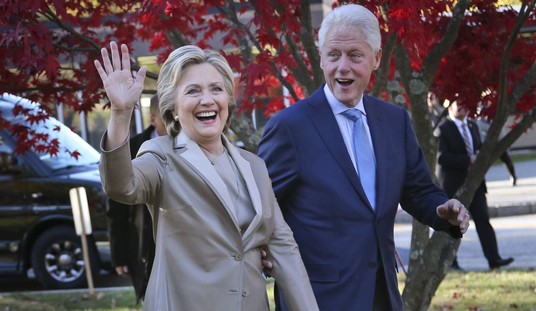Holy smokes, people. They said it couldn’t be done. But it looks like the European finance ministers decided to get together and disprove everyone who has been saying for days now that they couldn’t even come close to acting in a coordinated way.
They pulled 440 billion euros out of a hat, as a bailout fund for sovereign states. The IMF kicked in another 250 billion, and there’s another 60 billion coming from the EU itself. It’s just under a trillion dollars.
You’re not going to believe what you see when Wall St. opens this morning. A rally is going on in European stock markets like nothing I’ve seen there before.
It’s too early for armchair analysis, but a few points spring to mind: first, this is clearly an application of the Bernanke Doctrine: respond to incipient liquidity crises as fast as possible, and in SIZE.
Second, they didn’t make the near-fatal mistake that Bernanke and Paulson did with our TARP, which was to seek Congressional authority for it, thus delaying its impact on markets for two and a half agonizing weeks. The European ministers just got together, did the deed, then announced it ahead of the overnight open in Asian markets.
They still will have to get this thing approved by the German parliament (in which Chancellor Merkel got a sudden and very unwelcome loss of seats on Sunday, due to adverse election results in North Rhein-Westphalia).
But Merkel has a bit of time. She made the key point that quick Parliamentary approval is unneeded for two reasons: first, she already jammed through the Greece-specific rescue the other day; and the EU’s 60-billion euro tranche of Euro-TARP will be available immediately because it needs no parliamentary approval. (Not having democracy comes in handy sometimes.)
We don’t yet know the exact nature of this program. The PR on our TARP was handled in the worst imaginable way. As a result, the retrospective conventional wisdom on TARP is that it represented a direct expenditure of taxpayer dollars to bail out Wall Street firms. Except for the slice of TARP that was used to directly bail out GM, Chrysler and the UAW, the reality was vastly different.
If Euro-TARP is structured similarly to the original US TARP, then it has a good shot of succeeding. Succeeding at what? Preventing an incipient European liquidity crisis from catching fire.
Stay tuned. There’ll be a lot more to this story.
Another point about the market reaction: The US 10-year note is trading this morning to yield 3.60%. Less than a month ago, its yield briefly went over 4%. For a few moments last Thursday afternoon, it was 3.27%. You’d be surprised to see this much volatility over the course of a year. Coming over a few days, it’s shocking.
Update: 11:00am EDT: The stock-market advance has stalled out and feels a little heavy. It’ll probably pick up some steam later in the day, but this feels like a disappointment to me. The Europeans clearly intended to change the world with their $1 trillion TARP, but it’s not yet clear that they did.
I don’t know that people In the markets are thinking this way, but here’s what I’m thinking: you can create a trillion dollars in brand-new money if you want, but if you don’t make economies more productive, all you do is dilute the purchasing power of the money that’s already out there. It certainly does make life sweeter for the very wealthiest people, because this action by the Europeans shifts economic value to them at the expense of ordinary citizens. But looking farther out, how can you sustain that model for stabilizing financial markets?
This story first appeared at The New Ledger.













Join the conversation as a VIP Member